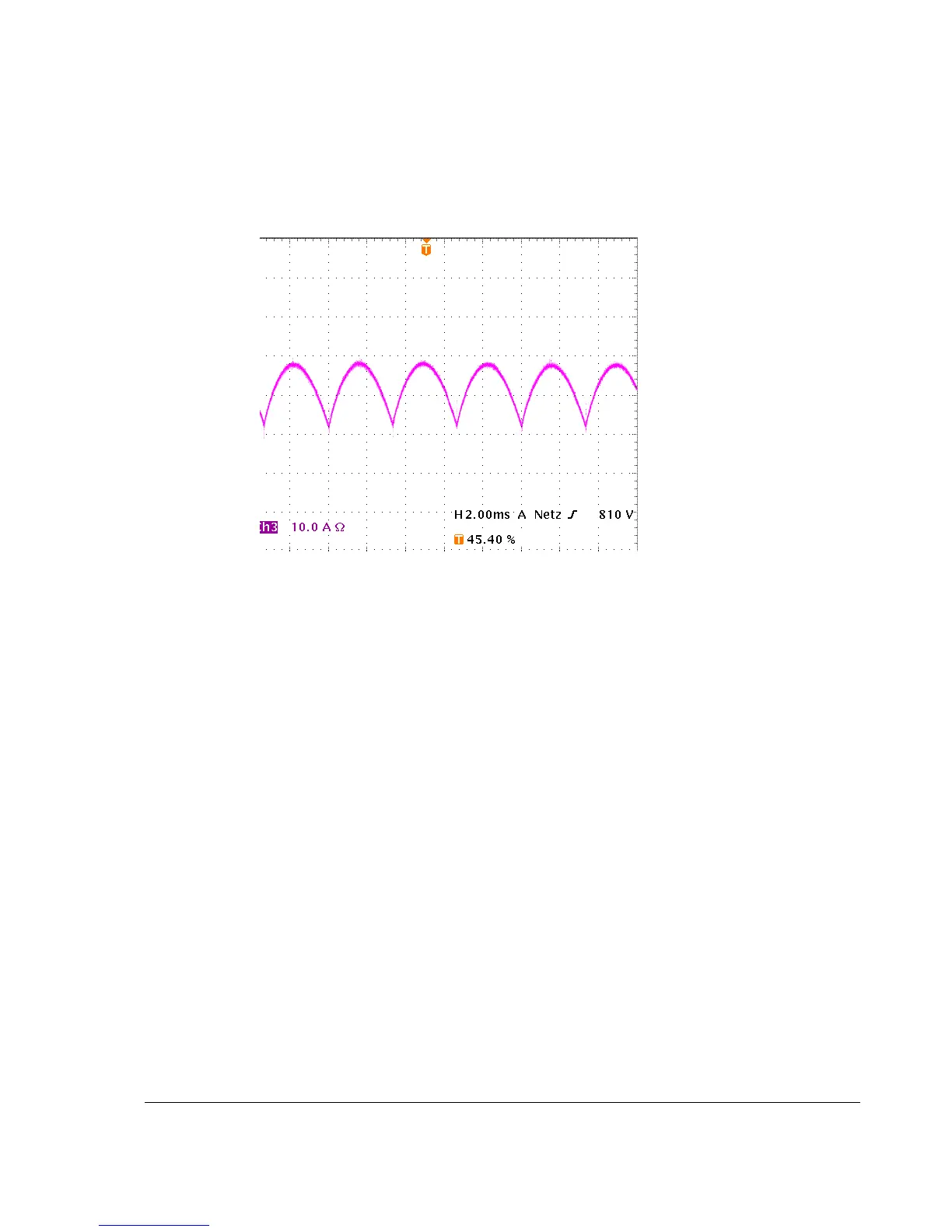23
Fault Tracing Thyristors
DC-current pulses measured by an oscilloscope
Connect an oscilloscope to the fixed AO I-act (X4:9/10 on the SDCS-CON-4 or
X4:5/6 on the SDCS-IOB-3) and check for the proper amount of current pulses:
Six current pulses in positive direction
There should be six current pulses in positive direction.
In case of a 4-Q converter also the six current pulses for the negative direction
have to be checked.
Thyristor diagnosis
Also the thyristor diagnosis provided by the firmware can be used:
Switch the drive to local mode (DriveWindow, DriveWindow Light, DCS Control
Panel or local I/O).
Start the thyristor diagnosis by means of ServiceMode (99.06) = ThyDiagnosis
and set On and Run within 20 s.
During the thyristor diagnosis the main contactor will be closed and the
thyristors are checked. The field current is not released while the thyristor
diagnosis is active and thus the motor should not turn.
When the thyristor diagnosis is finished check Diagnosis (9.11) for details.
Ripple monitor
The ripple monitor indicates that the ripple of the DC current is much higher than
normal. In such a case, most often one thyristor does not work. It’s missing current
contribution causes a deep dip in the direct current.
The structure of the current loop (current controller) will force the other thyristors to
compensate the dip by a certain overcurrent in order to keep the average current
constant. Such a compensation results in a ripple monitoring fault during motoring
mode operation with 90°.
The reason for a current less thyristor may be:

